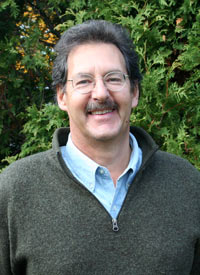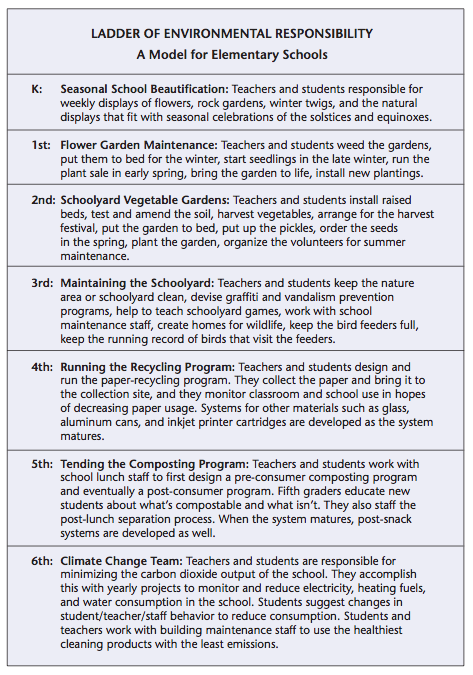How To Have A Hard Talk About Our Changing Environment With Kids

Antioch University New England
Professor David Sobel has spent much of his academic career examining how to engage children around issues of changing environments.
Earlier this week, we looked at how kids who live in coastal Florida learn about sea-level rise. They witness it all around them: on television, in school, sometimes in their front yards.
Even so, big, landscape-changing events in nature can be tough for children to understand.
So we spoke with Professor David Sobel, who has spent much of his academic career at Antioch University in New England examining how to teach kids about the environment. He’s developed the Environmental Ladder of Responsibility (seen below)—a developmentally appropriate framework for the when and how of talking to children about environmental issues.
Q: How do you talk to kids about sea-level rise?
Sobel: Sea-level rise is just one aspect of talking to kids about climate change. I think we’d consider them wed together.
Trying to engage kids in understanding the issues and figuring out what they can do about it without inordinately scaring them is a great approach to sea-level rise.
It’s important that kids progressively understand the issues. Before you dump a lot of responsibility on them, you’ve got to make sure they feel connected to the natural world, and at one with it, and understand its beauty. And have a sense of why they want to protect it before you recruit them to be conservationists.
Q: In South Florida, kids witness sea-level rise all around them, sometimes literally in their front yards. What do you do when kids, especially young kids, have really hard questions about what’s happening?
This differs a lot depending on if you’re talking about 4- to 7-yr-olds, or 7- to 11-yr-olds, or 11- to 14-yr-olds. But with the youngest kids, it’s really important to assure them people are working on this problem. The sea level’s rising, it’s happening a little at a time; it’s not happening all at once. Kids don’t understand rate of change. And [tell them] there are a lot of people working to make a difference and you can make a difference, too.

David Sobel
Professor David Sobel developed the Ladder of Environmental Responsibility as a guide for when and how to discuss climate change with children.
Q: What are the risks if you aren’t careful about directing the conversation?
If there’s too much emphasis on fear, then kids just shut off. I think there’s a dissociation that happens—similar to what happens when kids are in violent home situations. They dissociate and just disconnect.
And so it’s easier for kids to dissociate and say, ‘well I can’t deal with that, I can’t think about that, it’s too scary.’ Then you can scare them into inactivity and unresponsiveness.
Q: So let’s say you’re a parent who has been relying on television and school, but it’s time to have the talk about sea-level rise and climate change, where do you start?
You don’t start with the talk; you start with increased opportunities for kids to be in the natural world. To be on walks, be in the ocean and to experience the grandeur and fun of being in nature so that kids appreciate it and recognize its values.
And then you slowly start by saying: here’s a problem, it’s been happening for a while, and here’s something we can all do about it to make a difference.